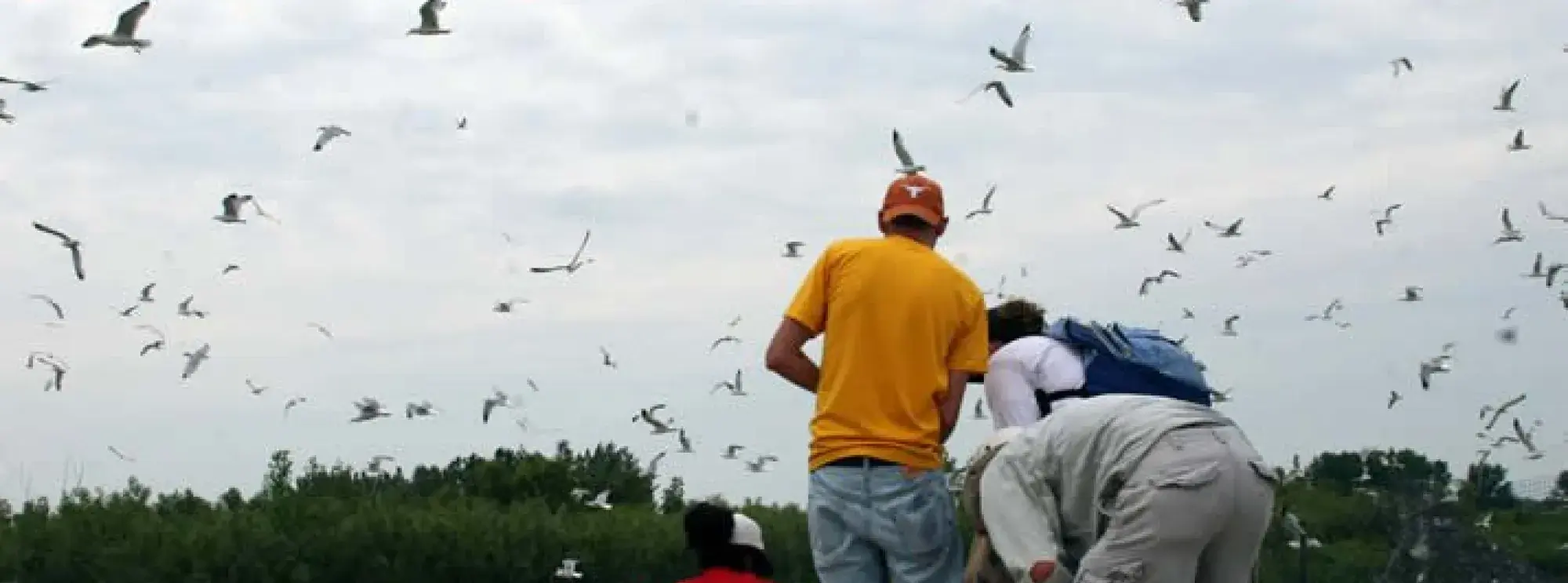Effects of pollution on Great Lakes colonial water birds
For more than 20 years, professor Keith Grasman has studied the effects of pollution on Great Lakes colonial waterbirds, focusing on three species: Herring Gulls, Black-Crowned Night Herons and Caspian Terns. By testing these birds, he provides the data needed to guide cleanup efforts and inform government agencies, like the U.S. Fish and Wildlife Service which sponsors his work, of the magnitude of the problem.
Colonial waterbirds are exposed to pollution when they eat contaminated fish. But the gulls and terns that make their homes on the CDF are affected much more directly. Bay City’s channel conducts a high volume of cargo ships, whose deep drafts require the channel to be regularly dredged. The resulting sediment is thick with industrial chemicals like polychlorinated biphenyls (PCBs).
Considered too toxic to be brought inland, the sediment is dumped on the island.
Many of the island’s birds display symptoms of Great Lakes embryo mortality, edema and deformity syndrome (GLEMEDS), responsible for immune system deficiencies and birth defects like crossed bills.







